Key takeaways
- Paranormal infotainment merges storytelling with supernatural elements, engaging curiosity and making ghost stories relatable.
- The legend of the Headless Horseman showcases how folklore evolves, reflecting societal fears while connecting generations of storytellers.
- Effective paranormal research combines traditional methods with personal experiences, demanding both skepticism and open-mindedness.
- Collaborative investigation enriches understanding, highlighting the emotional connections people have with haunting legends.
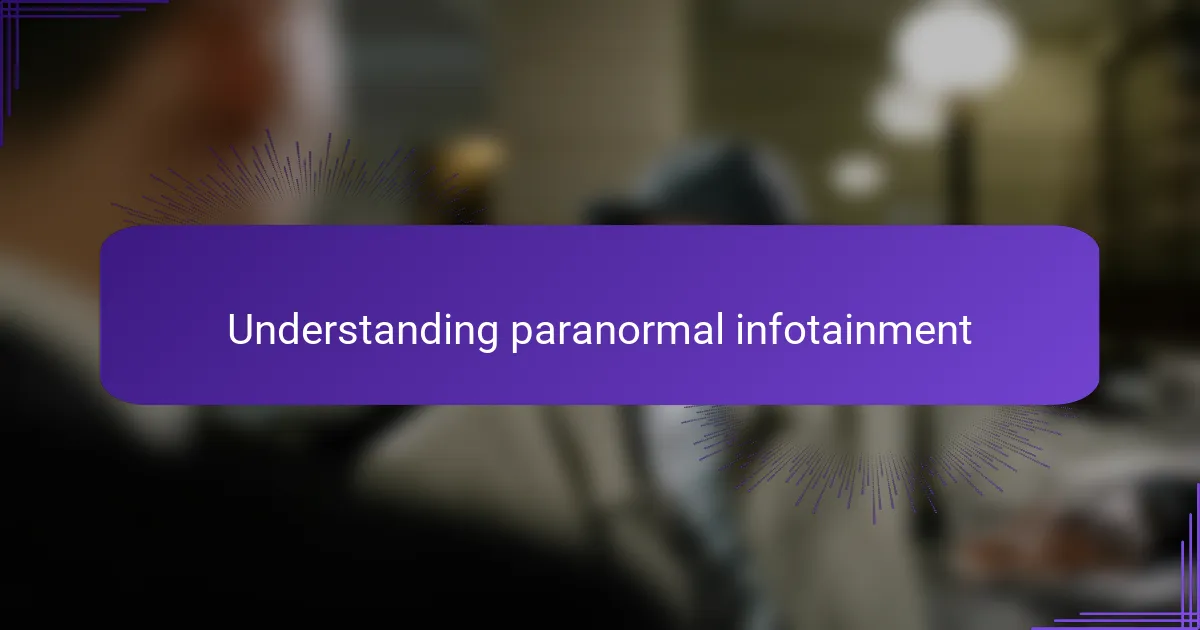
Understanding Paranormal Infotainment
Paranormal infotainment blends storytelling with supernatural events, creating a space where facts meet fascination. I’ve often found myself drawn into this mix, wondering: How much is real and how much is crafted for our thrill?
What intrigues me the most is how these stories tap into our curiosity about the unknown. They make the eerie feel accessible, turning ghostly legends into conversational sparks around the dinner table or late-night chats.
Have you ever caught yourself debating if a paranormal tale is fact or fiction? That’s the beauty of paranormal infotainment—it invites us to explore mysteries while keeping us entertained, making every story a personal adventure.
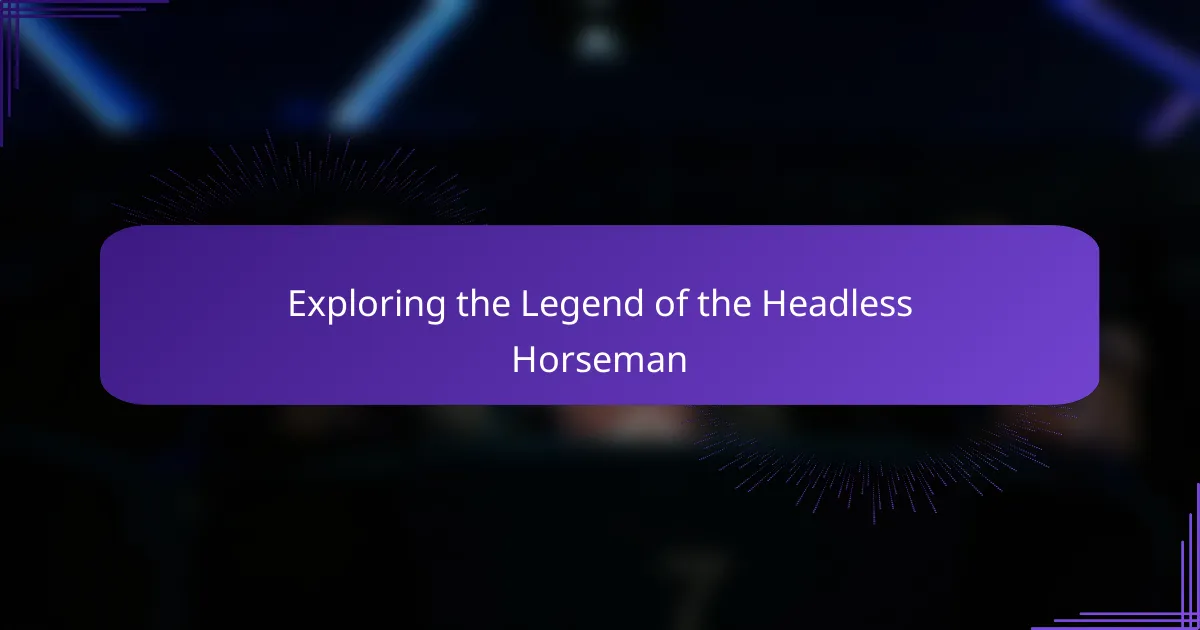
Exploring the Legend of the Headless Horseman
The Headless Horseman is one of those legends that refuses to fade away, haunting our imaginations with a shadowy figure galloping through the night. When I first delved into the story, I found myself captivated by how a simple tale from Washington Irving’s The Legend of Sleepy Hollow transformed into a cultural icon that sparks both fear and fascination. Have you ever noticed how this mysterious rider embodies our deepest fears of the unknown, yet somehow feels eerily familiar?
What struck me most is how the legend varies with every retelling—sometimes a ghostly Hessian soldier, other times a restless spirit in search of its missing head. This fluidity makes me wonder: Is the Horseman’s true mystery not just in his gruesome appearance but in the way the story morphs and persists through time? For me, exploring these variations opened up a window into how folklore shapes and reshapes itself across generations.
There’s a strange comfort in knowing that people hundreds of years ago were just as intrigued and unsettled by this spectral figure as we are today. As I pieced together different versions, I felt connected to a long chain of storytellers, each adding their own layer of mystery. Isn’t it fascinating how a legend like the Headless Horseman can bridge centuries, inviting us all to question what lurks in the darkness?
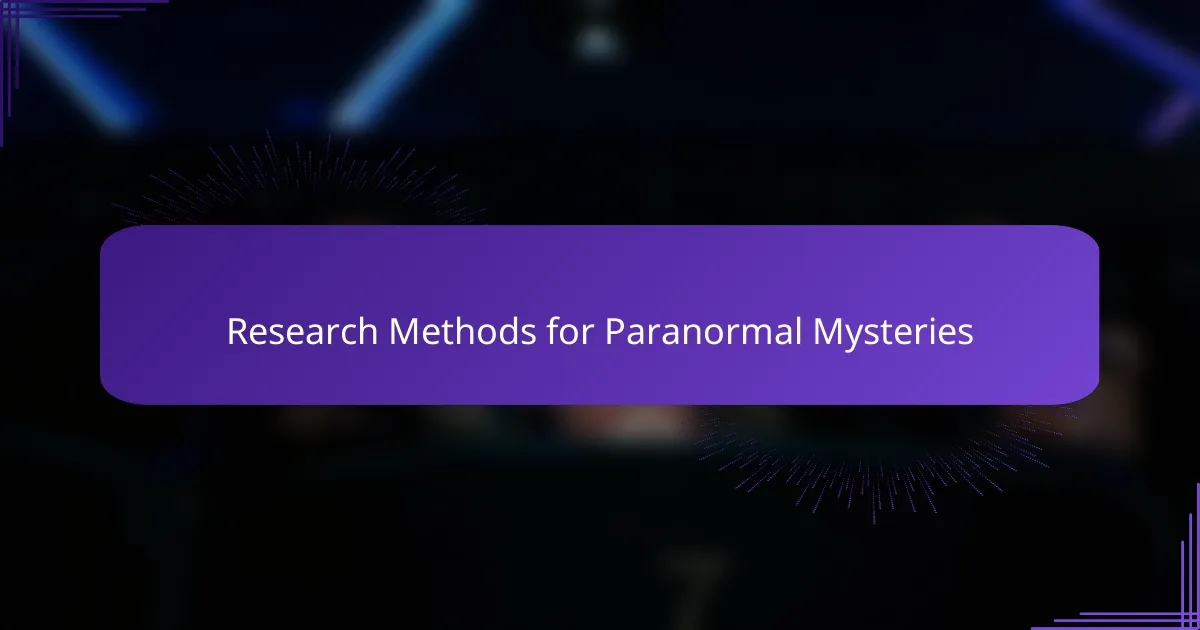
Research Methods for Paranormal Mysteries
When I began investigating paranormal mysteries like the Headless Horseman, I quickly realized that research isn’t just about collecting facts. It’s about observing details—listening closely to stories, noting inconsistencies, and understanding the emotions these tales evoke. Doesn’t it make you wonder how much of the mystery lies in what’s left unsaid?
I also found that combining traditional research methods with unconventional tools was essential. Digging through historical records gave me context, but pairing that with nighttime stakeouts or interviews with locals added a layer of authenticity you can’t get from books alone. Have you ever felt that chill when a story becomes more than just words on a page?
Most importantly, I learned to stay open-minded yet critical. Paranormal investigation demands a balance between skepticism and belief—questioning everything without dismissing experiences outright. This approach kept me grounded while still allowing space for the inexplicable, which, I think, is where the real intrigue begins.
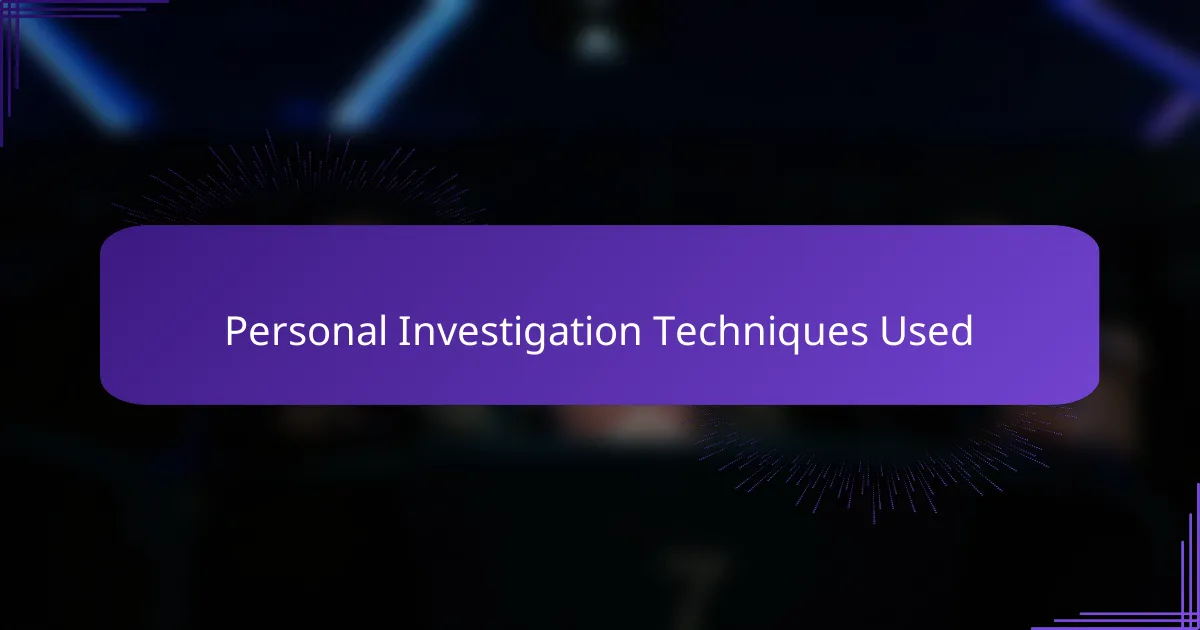
Personal Investigation Techniques Used
I started my personal investigation by revisiting the locations tied to the Headless Horseman legend, walking the same trails under moonlight to soak in the atmosphere firsthand. There’s something about physically being where the stories were born that makes the mystery feel more alive—have you ever noticed how a place’s energy can shift your perspective entirely?
Using a handheld EMF detector, I monitored electromagnetic fluctuations during quiet moments, curious if unseen forces might register in measurable ways. While the device didn’t deliver ghostly messages, it sparked deeper questions about what science can and cannot explain in paranormal phenomena.
I also kept a detailed journal, noting every sighting, sound, or unusual feeling—something I found invaluable for spotting patterns or discrepancies in firsthand accounts. Reflecting on these notes later helped me separate genuine curiosity from imagination, which is crucial when dealing with stories so rich in folklore and fear.
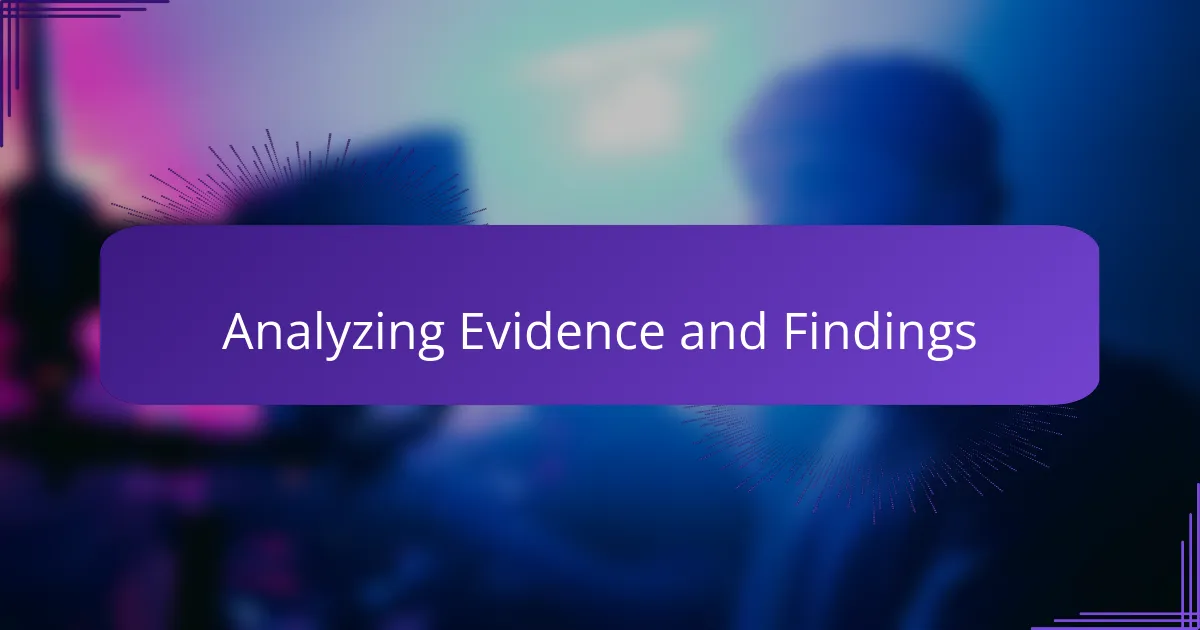
Analyzing Evidence and Findings
Going through all the evidence, I couldn’t help but notice how elusive the Headless Horseman really is. Some eyewitness accounts shared eerie consistencies, like flickers of movement in the trees or sudden drops in temperature, yet others felt more like echoes of imagination. Have you ever struggled to determine if what you experienced was real or a trick of your mind? That blurry line was exactly where my investigation lived.
What stood out most was how inconsistencies in the tales didn’t weaken the mystery but rather deepened it. The variations hinted at something more than just a ghost story—perhaps a collective memory or a symbolic warning passed down through generations. It made me reconsider how we interpret evidence: sometimes the contradictions tell a story as clearly as the facts do.
I also found that analyzing physical data alongside stories was surprisingly revealing. For example, the spikes in electromagnetic readings at certain locations didn’t prove a haunting, but they did coincide with reported sightings, making me wonder if there’s a natural phenomenon influencing our perceptions. Isn’t it intriguing how science and folklore can intersect, both shaping how we understand the unknown?
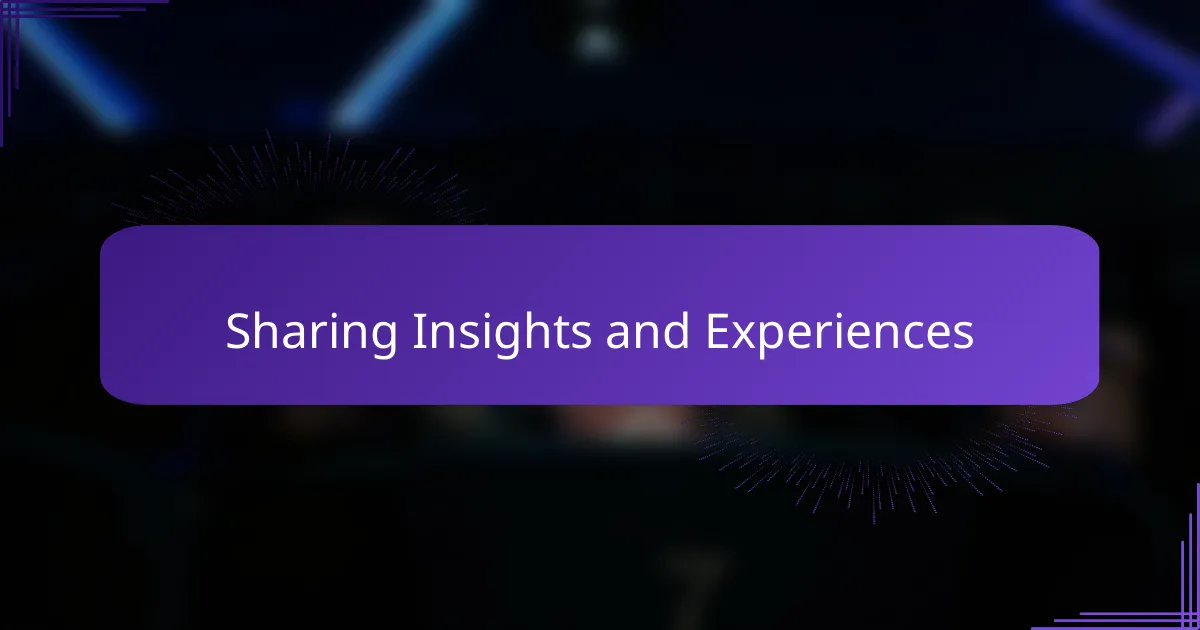
Sharing Insights and Experiences
During my journey investigating the Headless Horseman, I often shared findings with fellow enthusiasts and locals, and what struck me was how these exchanges enriched my understanding. Hearing others’ experiences brought new angles to the legend I hadn’t considered—sometimes their stories felt just as vivid and haunting as the written accounts I’d studied. Have you ever realized how much richer a mystery becomes when you gather diverse voices around it?
One memorable conversation was with an elderly resident who described feeling an inexplicable chill on a road supposedly haunted by the Horseman. Listening to her firsthand account reminded me that these encounters are not just tales but deeply felt moments that leave lasting impressions. Those personal experiences gave me a more nuanced view, blending skepticism with a genuine respect for what people perceive in the shadows.
Sharing my own notes and reflections also challenged me to clarify what I truly believed versus what I hoped to find. Writing down every detail, then discussing them openly, helped me untangle the layers of fact, folklore, and imagination. Isn’t it fascinating how talking through a mystery can both ground and expand your perspective?
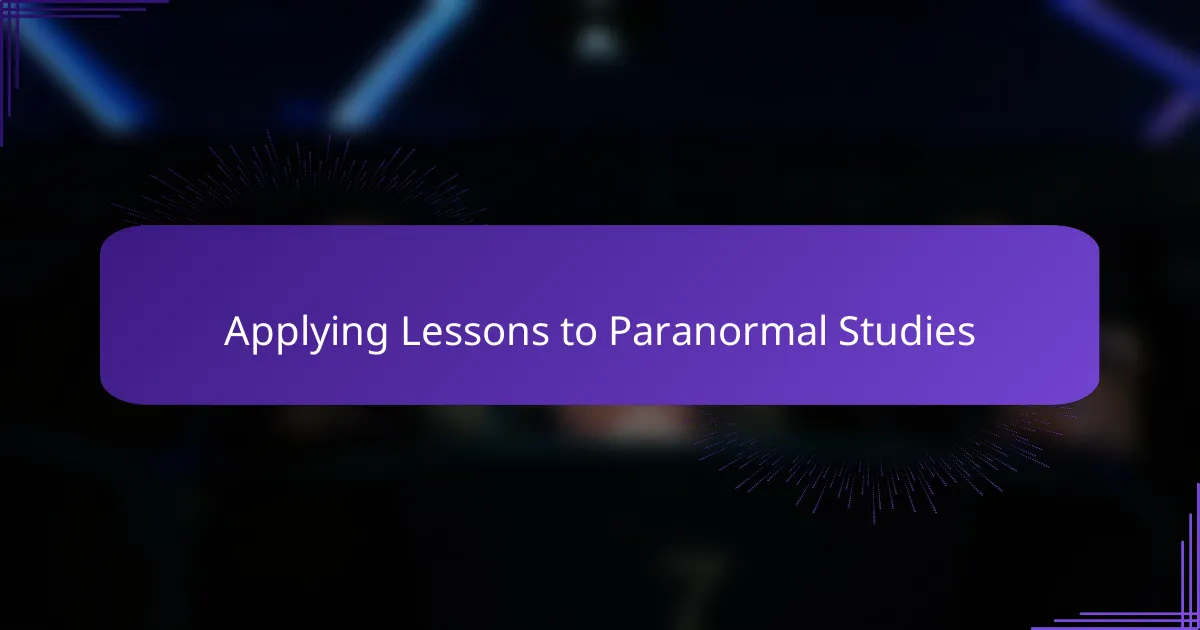
Applying Lessons to Paranormal Studies
Applying the lessons from my Headless Horseman investigation to paranormal studies has reshaped how I approach these mysteries. I realized that embracing the fluid nature of folklore—where stories evolve and sometimes contradict—is crucial. Isn’t it telling that the gaps and inconsistencies often open doors to deeper understanding rather than mere confusion?
I’ve also learned the importance of blending open-minded curiosity with critical analysis. Balancing skepticism with a willingness to acknowledge unexplained phenomena feels like walking a tightrope, but it keeps the investigation honest and authentic. Have you ever found that accepting uncertainty sometimes reveals more than forcing a concrete explanation ever could?
Finally, I see value in involving others—sharing stories, comparing notes, and welcoming diverse perspectives. This collaborative spirit not only enriches the research but also honors the human experiences behind each haunting tale. It makes me wonder: Could the heart of paranormal studies be less about proving ghosts and more about connecting with the emotions and histories that shape these enduring legends?